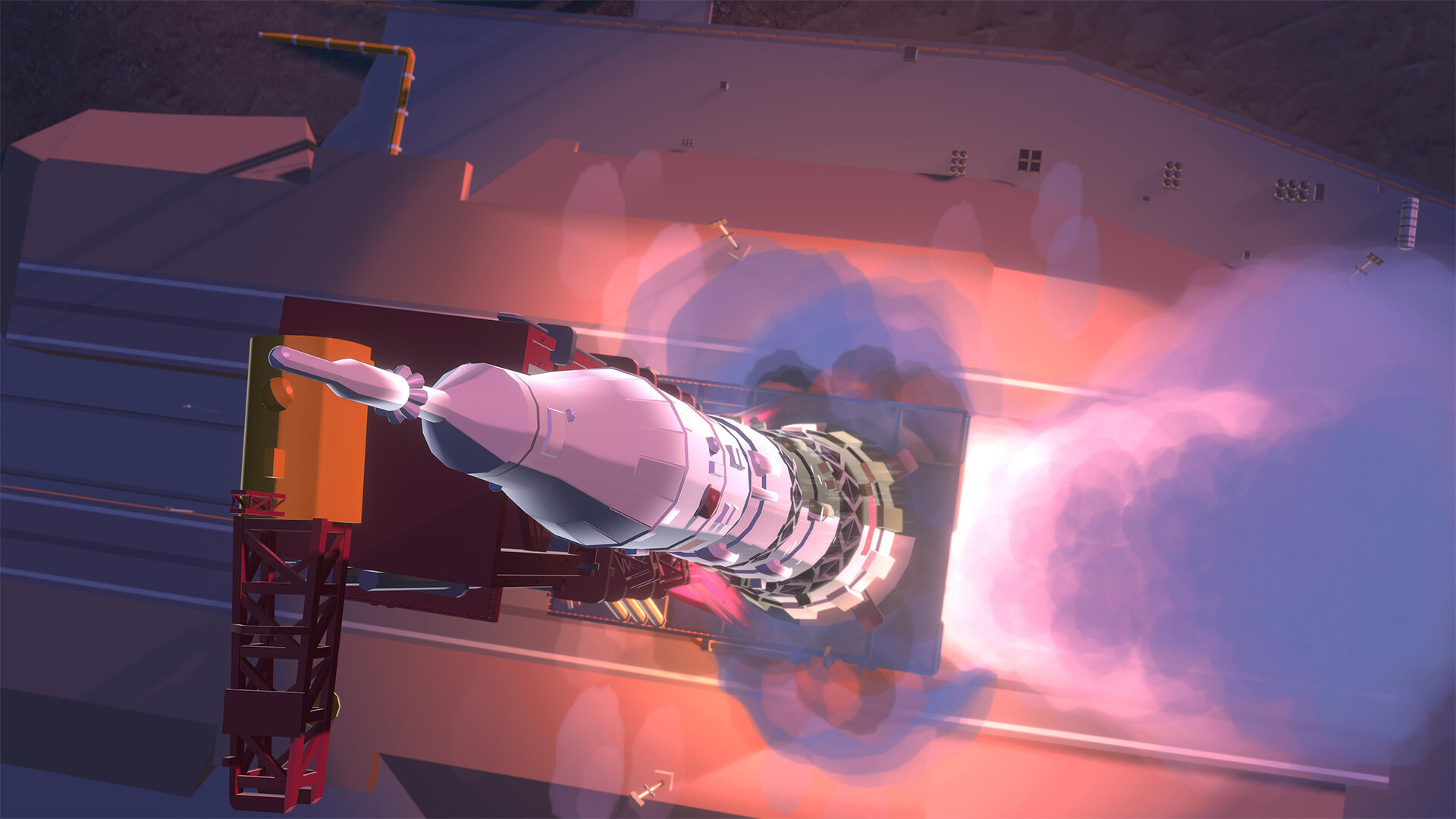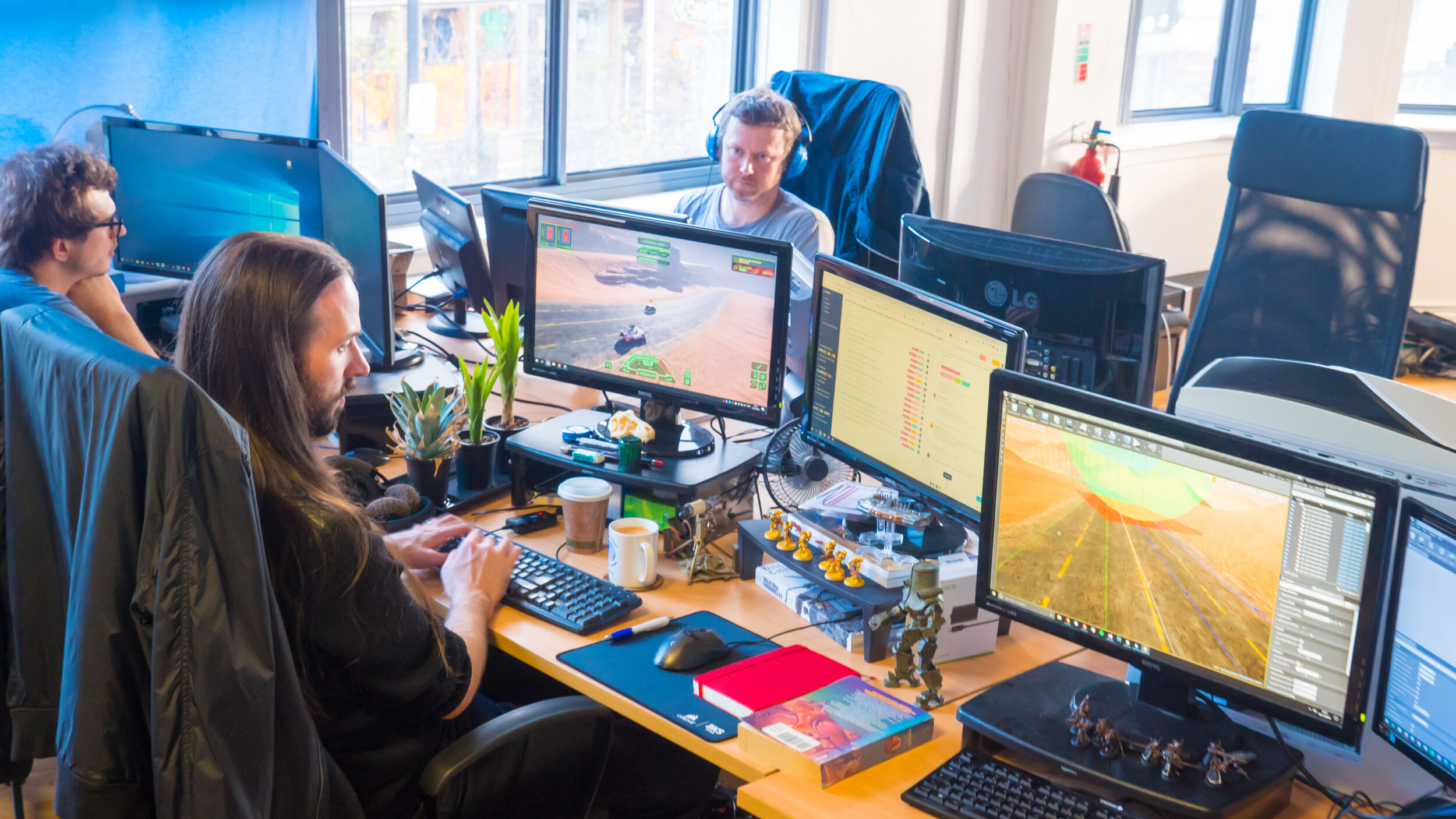How to make your first video game
/You might have decided that you have a bit more free time of late so it’s the perfect time to start making video games. Or you might have read our guide on “how to get a job in the games industry”, and are keen to do the “go make games and see if this is something you actually like doing” part of it.
Whatever the reason, making your own game can feel like a daunting task if you have no idea where to start. After all, video games creation sometimes has the appearance of being a dark art - a witch’s brew of creativity, visual design, audio engineering, and more, all held together using the mystical incantations of code.
And while making games is a challenging endeavour, it’s by no means out of the reach of anyone’s ability. It’s also highly rewarding to tackle a creative project like a video game, so if you’re up for that challenge, you should give it a go.
We’ve put together a guide to get you making games as quickly as possible, based on questions we get asked most frequently.
“I’m not really a technical person, doesn’t that stop me from making games?”
Not at all.
First of all, you don’t have to make video games at all, you could try your hand at board games and see if the experience of making games in any capacity is something that appeals.
While there’s a lot you won’t learn about video games by making board games, you can learn a whole bunch of things that do apply to interactive entertainment: prototyping, designing and documenting systems, balancing gameplay, the importance of playtesting, art direction, creative writing, and more.
Even if you are someone who quite enjoys technical challenges, making a board game can be an exciting experience as it’s generally quicker and easier than making video games, and it helps budding designers of all mediums understand why low fidelity prototypes can be so useful.
“What hardware do I need to make games?”
From here we’ll assume you’ll be making a video game, but what equipment you need to make them can vary greatly.
If you’ve got a fairly decent computer then you’re definitely good to go: you can get started with most development tools on a mid-spec gaming PC.
If you think you might have a lower-end PC then you should check what hardware you’re running (by running a DXDiag, for example) to understand your system specs and check with the toolmaker’s website to see if you meet the requirements for the software you’d like to use - as an example of a higher-end tool, here’s the one for Unreal Engine 4. There are some much less resource-intensive development tools available, so if you can’t run, say, Unity, then see if Adventure Game Studio or GameMaker will be a better fit for your setup.
But even without a PC you can make full-fledged games, as well as the assets that go into those games.
If you’re looking to do art and you have a tablet, for example, then you have a huge range of image manipulation software available to you - the iPad even has Photoshop. If you want to make music, and all you have is an Android device, then you’ve got SunVox and nanoloop and a whole bunch more audio tools besides waiting for you. And coders can do their thing with software like Pocket Code and TIC-80.
Heck even a super underpowered netbook or phone can get in on the action with browser-based solutions like Microsoft MakeCode Arcade.
And consoles aren’t left behind either. Though there are a handful of traditional development tools on consoles (noticeably the very traditional SmileBASIC), there are a lot of titles in which you can make game-like experiences.
So if you have any of the above bits of hardware, you’re good to get started.
“What software should I use to make a game?”
This is really up to you and what you want to achieve.
For a moment, let’s assume you want to make games because you want to build a portfolio as a games developer and land your first job in the industry. In this instance, it’s worth considering getting familiar with at least one of the “standard” pieces of software that are being used by your discipline at the kinds of companies you want to work at, as part of the game making process. If you want to be an artist for Auroch, let’s say, it’s probably worth using Photoshop or 3ds Max as part of your project, as those are tools we’ve used on a number of our previous games.
Some software is expensive, some is free, some has a free trial… just get in touch with the places you would like to work and ask what they use; we’re sure they’ll be happy to point you in the right direction.
But let’s now assume you’re free to pick whatever you want to use: you’re doing this for fun, plan on being a one-person-band, or are just keen to experience the process.
It’s probably best to start making games with a pre-made tool, as this will considerably speed up the process. You might be tempted to try and write your own engine, for example, but that’s probably overkill if you’re starting out - unless you’re really interested in how engines work. In which case, go for it.
We reckon you can (very broadly) separate tools into four categories: tools where you make a game from the ground up, tools that make a specific type of game, tools to create the things that go in games, and software to make game-like things. We’re going to give a few examples of each below, but this list is by no means exhaustive, and is really meant to illustrate that you can jump into making games where you most feel comfortable.
Tools to make games from scratch
These let you make pretty much any kind of game you want, from start to finish, and the game can then be distributed in a variety of ways, including platforms like the PC, mobile, and consoles.
Unreal Engine 4 (PC)
The engine used to create Fortnite, Octopath Traveler, Life Is Strange 2, Darksiders 3, and many more besides. It’s a very powerful tool with a huge amount of flexibility, and because of that the learning curve can be quite steep.
Unity (PC)
An incredibly popular and versatile engine, which was used to create Untitled Goose Game, Call of Duty: Mobile, PC Building Simulator, Snipperclips and other great games. Again, this is a fully-featured tool and can be tricky to get to grips with initially.
GameMaker 2 (PC)
Nuclear Throne, Undertale, Hyper Light Drifter… the list goes on, but GameMaker’s various iterations have been partly responsible for lots of popular titles. GameMaker isn’t quite as flexible as the above two engines, but it is slightly easier to work with.
Tools to make games for specific genres
The general rule of thumb is that the more you constrict the capacity of a tool, the easier it is to learn that tool. There are several engines that are specifically designed to make certain types of game, many of which have a lower barrier of entry than their more flexible alternatives.
RPG Maker MV (PC)
Want to make a JRPG like Dragon Quest or Chrono Trigger? This is for you. Though it’s also on console in a more limited state (see below), the PC version will let you export what you make to different platforms, import new assets, and so on.
Adventure Game Studio (PC)
For people looking to make something close to Broken Sword or Zak McKracken and the Alien Mindbenders, AGS is perfect. It’s well-supported and is a mature toolset, with loads of documentation and guides on how to make neat stuff.
Twine (PC, Browser)
There are loads of people out there making games in the vein of Zork and Colossal Cave Adventure, and a lot of them are made using Twine. This is one of the simplest ways of getting a narrative game made, and the results can be spectacular.
Tools to create the things that will go in your games
You can get pre-made packs of assets for games - if you’d prefer not to make them - from places like OpenGameArt.org and Freesound. But if you’re keen on making them yourself, these tools let you do that. We’ve focused on free ones here, but paid options are out there.
Blender (PC)
A 3D creative suite that can take you from making your first few polygonal shapes, all the way to industry-quality 3D models. It’s an astonishingly powerful too, and worth looking at if you’re an arty sort.
GIMP (PC)
An open source image editor that has a lot of the functionality of more expensive alternatives. It’s more than good enough to handle small art projects.
Audacity (PC)
A simple but robust audio editing program that will handle the basics with ease, until you’re ready to move onto something a bit more complex.
Software to make game-like things
This is a very broad category, but it contains things that let you make custom content relatively easily within a very restricted environment. From levels within a platformer, to interactive art pieces, there’s a ton of stuff you can do with these, and they usually have a low barrier to entry and time investment needed to get to grips with them.
Dreams (PlayStation 4)
Potentially the most “open” of all the creative software on console, with Dreams you can let your imagination go wild, then share it with an active community.
Levelhead (PC, Xbox One, PlayStation 4, Nintendo Switch, Android, iOS)
If you’re keen on making hardcore platforming levels, then Levelhead is perfect, with easy sharing and rating of content.
RPG Maker MV / RPG Maker FES (PlayStation 4, Xbox One, Nintendo Switch, Nintendo 3DS)
Make a sweeping JRPG. Share it with pals who can play it even without the software it was made on.
“How do I learn the skills to make my game?”
There are a couple of avenues to build out your abilities.
Many folk are privileged enough to choose to go to university (or similar higher education) and learn to make games there. This can be a solid route, but it’s not for everyone and it’s not going to teach you everything you’ll need to make games - learning is a life-long process and tools and technology are always changing.
Perhaps one of the best resources for learning to put your own games together is tutorials on the Internet, especially on YouTube, as they visually walk you through the steps of making something contained and achievable, which you can then apply to other projects.
Brackeys does a really great series on getting started with Unity, covering everything from installing the editor, to cameras, movement, gameplay, export, and more. If you’re creating in GameMaker Studio 2 then Shaun Spalding will show you how to make a platformer/shooter hybrid in his series. And the wonderfully named Mighty Coconut walks through how they made the Twine 2.0 version of 57° North.
These are superb places to start, but even as your skillset grows you’ll still be able to use YouTube as a great resource for more specific questions you might have. Need to know how to add a fishing mechanic to your RPG Maker MV game? Micro Hamster has you covered. Stuck on how to add bullet holes in your Unreal Engine 4 first person shooter? Ryan Laley’s got a guide for that.
And beyond that there are plenty of inspirational and educational videos about game development to get you thinking about games in new ways. Give Game Maker’s Toolkit video about making levels in Super Mario Maker 2 a watch if you’re planning on making a platformer, jump over to GDC’s channel for the best of some fascinating talks on development, and then to Ars Technica’s War Stories series which highlights some of the fascinating challenges that games developers can face and how they overcame them.
“Anything else I should know?”
Loads! But that’s probably enough to get you started.
And even though this is pretty extensive, we’ve only scratched the surface. We didn’t talk about game jams, or modding, or getting involved in open source projects, or fan translations, and so much more besides.
But that’s okay! Stop reading this, get out there and make games, and let us know what you made over on our Discord.






